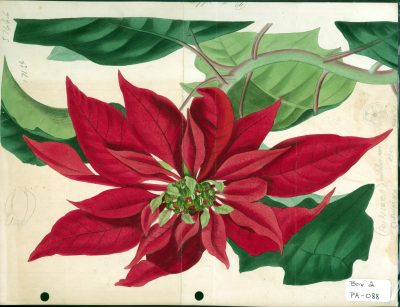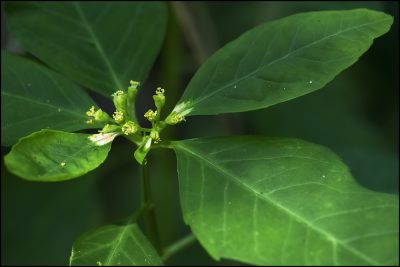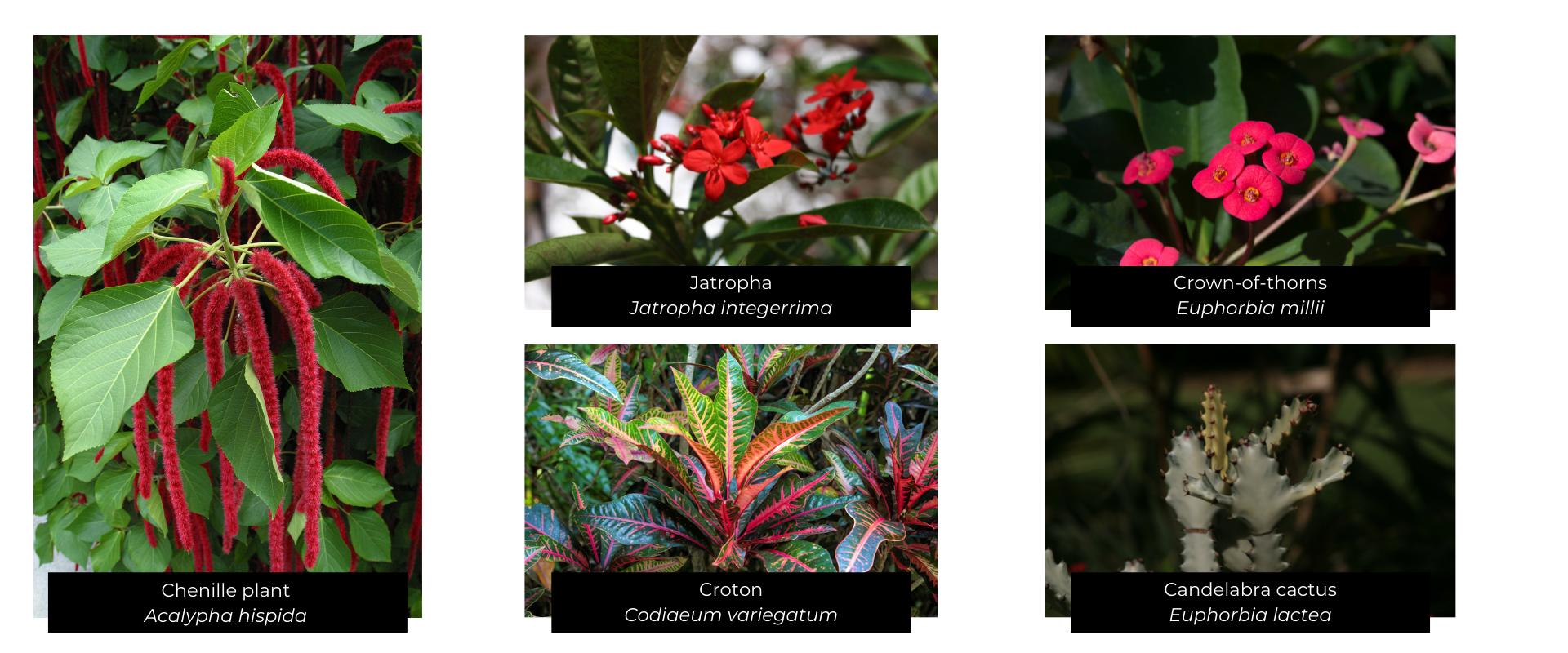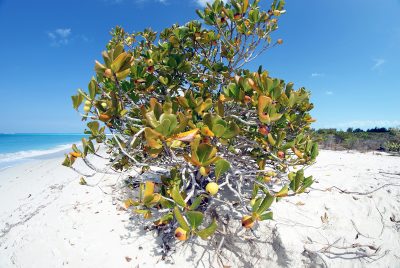
Botanical Illustration of Poinsettia (Euphorbia pulcherrima)
Euphorbias (commonly known as Spurge) are easy to grow perennial plants that are tough and have few problems. Popular for their richly colored leaves and unique floral structures, euphorbias are an excellent addition to borders, rock gardens, meadows and more. With over 2,000 types, you’re sure to find one that will thrive in your garden, no matter your climate. They are deer resistant, low maintenance, and drought and heat tolerant, which makes them ideal as ornamentals in landscaping and create a stunning display. There is even a native Euphorbia that resembles a miniature poinsettia which grows as a weed on the Selby Gardens’ grounds (Euphorbia cyathophora).

Euphorbia cyathophora
Florida has some 35-40 native species of Euphorbia and about 65-70 members of the Euphorbiaceae, the eponymic family that encompasses the genus. A number of showy landscape plants commonly used in south and central Florida (including at Selby Gardens) also belong to this family: e.g. crown-of-thorns (Euphorbia millii), copperleaf (Acalypha wilkesiana), chenille plant (Acalypha hispida), devil’s backbone (Euphorbia tithymaloides), jatropha (Jatropha integerrima), candelabra cactus (Euphorbia lactea), and croton (Codiaeum variegatum).

The Euphorbiaceae also contains plants of commercial, medicinal, and economic value, including castor-oil plant (Ricinus communis- also a common roadside weed in Florida), a species of rubber tree (Hevea brasiliensis), physic nut (Jatropha curcas), tallow tree (Sebia sebiferum) and tung tree (Vernicia fordii).

Manchineel tree (Hippomane mancinella)
